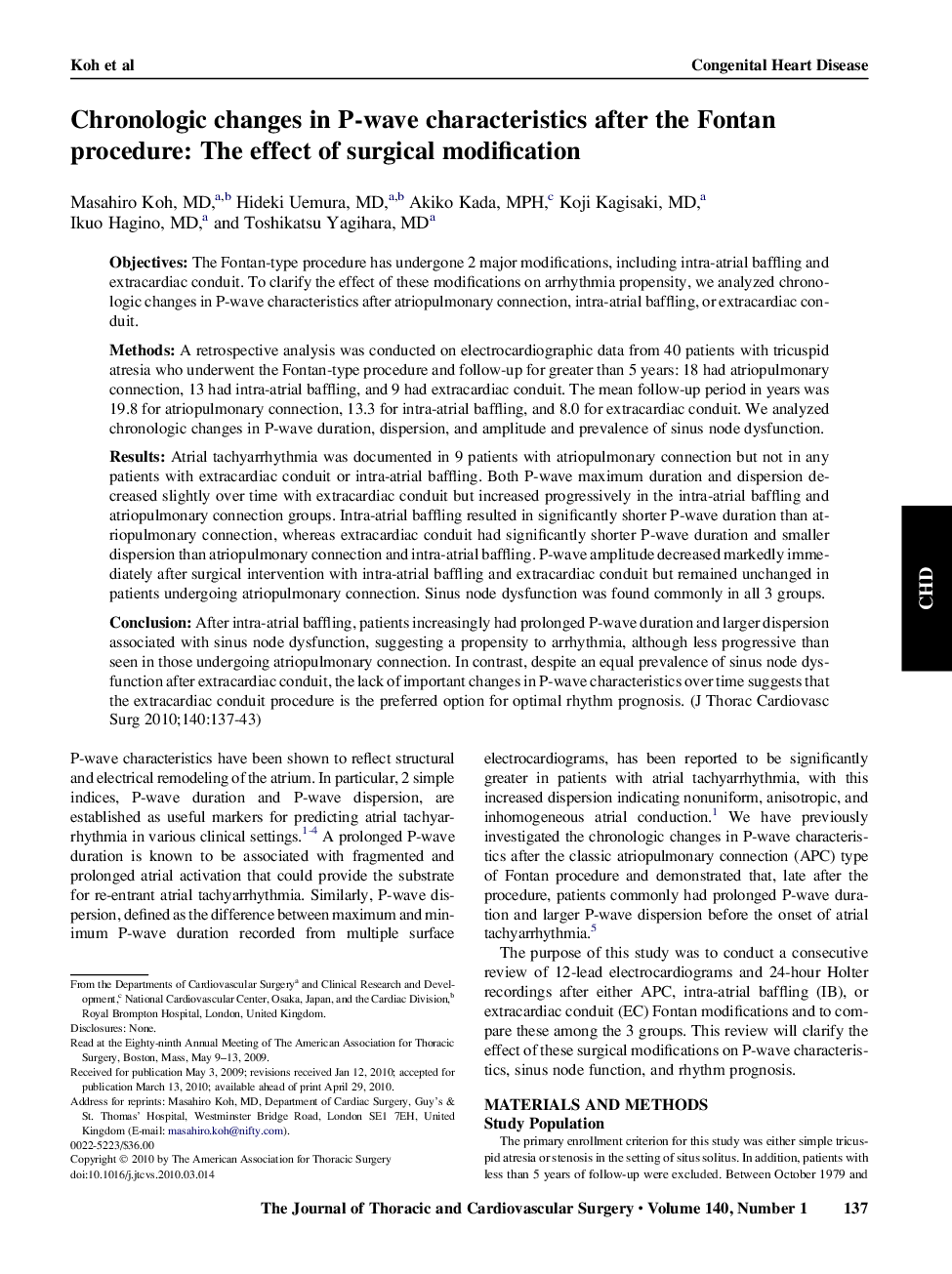| کد مقاله | کد نشریه | سال انتشار | مقاله انگلیسی | نسخه تمام متن |
|---|---|---|---|---|
| 5992359 | 1578660 | 2010 | 7 صفحه PDF | دانلود رایگان |

ObjectivesThe Fontan-type procedure has undergone 2 major modifications, including intra-atrial baffling and extracardiac conduit. To clarify the effect of these modifications on arrhythmia propensity, we analyzed chronologic changes in P-wave characteristics after atriopulmonary connection, intra-atrial baffling, or extracardiac conduit.MethodsA retrospective analysis was conducted on electrocardiographic data from 40 patients with tricuspid atresia who underwent the Fontan-type procedure and follow-up for greater than 5 years: 18 had atriopulmonary connection, 13 had intra-atrial baffling, and 9 had extracardiac conduit. The mean follow-up period in years was 19.8 for atriopulmonary connection, 13.3 for intra-atrial baffling, and 8.0 for extracardiac conduit. We analyzed chronologic changes in P-wave duration, dispersion, and amplitude and prevalence of sinus node dysfunction.ResultsAtrial tachyarrhythmia was documented in 9 patients with atriopulmonary connection but not in any patients with extracardiac conduit or intra-atrial baffling. Both P-wave maximum duration and dispersion decreased slightly over time with extracardiac conduit but increased progressively in the intra-atrial baffling and atriopulmonary connection groups. Intra-atrial baffling resulted in significantly shorter P-wave duration than atriopulmonary connection, whereas extracardiac conduit had significantly shorter P-wave duration and smaller dispersion than atriopulmonary connection and intra-atrial baffling. P-wave amplitude decreased markedly immediately after surgical intervention with intra-atrial baffling and extracardiac conduit but remained unchanged in patients undergoing atriopulmonary connection. Sinus node dysfunction was found commonly in all 3 groups.ConclusionAfter intra-atrial baffling, patients increasingly had prolonged P-wave duration and larger dispersion associated with sinus node dysfunction, suggesting a propensity to arrhythmia, although less progressive than seen in those undergoing atriopulmonary connection. In contrast, despite an equal prevalence of sinus node dysfunction after extracardiac conduit, the lack of important changes in P-wave characteristics over time suggests that the extracardiac conduit procedure is the preferred option for optimal rhythm prognosis.
Journal: The Journal of Thoracic and Cardiovascular Surgery - Volume 140, Issue 1, July 2010, Pages 137-143